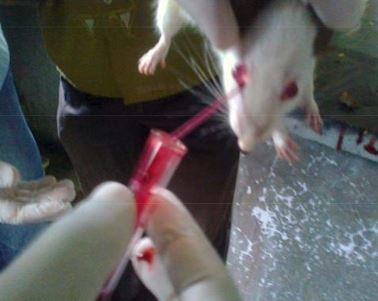An experimental evaluation of bark of Chirbilva (Holoptelea integrifolia Planch.) for Hypercholesterolemia in Albino Rats
DOI:
https://doi.org/10.21760/jaims.9.10.4Keywords:
Hypercholesterolemia, Medodusti, Chirbilva, Holoptelea integrifoliaAbstract
Hypercholesterolemia is an emerging problem affecting population now a days and responsible for CVD, HTN, Diabetes. Not following Dincharya, Ritucharya, smoking, consuming alcohol, lack of exercise, stress, intake of fast food are one of common cause for hypercholesterolemia. Hypercholesterolemia can be compared in Ayurveda as Medodusti which is due to intake of excessive Sleshmavradhaka Ahara (heavy food) leads to Agnimandhya (diminished digestive fire) and in turn Medodusti that is abnormal accumulation of Meda (Cholesterol). Chirbilva in Sushruta Samhita mentioned as Kaphamedovishoshaka. Hence to trace out its hypercholesteremic effect present study is taken.
Downloads
References
https://wwwwho.int/data/gho/indicator-metadata-registry/ir-details/3236
Begunde DO, Mathers CD, Adam T, Ortegon M, Strong K. The burden and costs of chronic diseases in low-income and middle-income countries. Lancet 2007; 370:1929-38.
Anonymous. Paraesthesia and neuropathy with hypolipidaemic agents. Aust Adverse Drug React Bull 1993; 12: 6.
Susruta, Susruta Samhita with Nibandha Sangraha Commentary of Sri Dalhanacharya - Edited by Vaidya Yadavji Trikamji Acharya; Chowkhamba Krishnadas Academy, Varanasi – 2004 Dalhana on Shareera Sthana - 4/12,13
Susruta, Susruta Samhita with Nibandha Sangraha Commentary of Sri Dalhanacharya - Edited by Vaidya Yadavji Trikamji Acharya; Chowkhamba Krishnadas Academy, Varanasi, 2004, ShareeraSthana - 4/12,13.
Animal Experiments in Research, Lemmens Medien GmbH, Matthias-Grünew, Bonn,Germany.
CPCSEA (Committee for the Purpose of Control and Supervision on Experiments on Animals) Guidelines, India.
Santosh et al. (2012). ‘A Study of Anti-hyperlipidemia, Hypolipidemic, and Anti-antherogenic Activity of Fruit of Emblica officinalis (Amla) in High Fat Fed Albino Rats’. International Journal of Medical Research and Health Sciences. Volume 2, Issue 1 Jan-Mar 2013.
Zarei A et al. (2013) Effects of Melissa officinalis on thyroid hormones. Zahedan Journal of Research in Medical Sciences. 15 (8): 6-12.
Madhavi Jagtap et al. (2011) ‘A comparative evaluation of cardioprotective activity of two Makandi (Coleus forskohlii Willd.) formulations against isoproterenol induced myocardial infarction in hyperlipidaemic rats’. Indian Journal of Natural Products and Resources. Volume 2(3), September 2011,pp.335-344.















